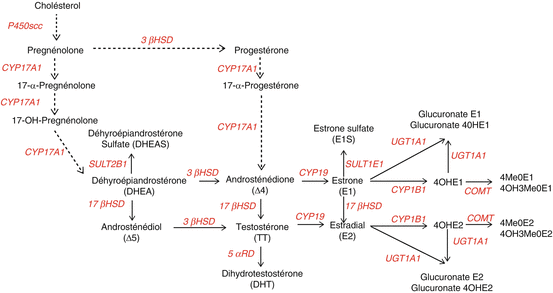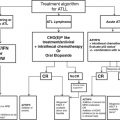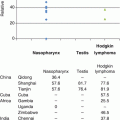Fig. 1
Standardized incidences of prostate cancer in the different countries of the world and in Guadeloupe and Martinique
1.2 Mortality
Cancer mortality in the Caribbean is generally lower, except for prostate cancer with a mortality rate four times higher than metropolitan France (27.4 against 6.4 per 100,000 inhabitants) [1]. The rate of mortality of prostate cancer in South America, sub-Saharan Africa and South East Asia is, respectively, 16.6, 20.9 and 6.7 per 100,000.
1.3 Risk Factors of Prostate Cancer
The high incidence of prostate cancer in the Caribbean area may be due to risks factors such as:
An aging population with high life expectancy.
African ethnogeographical origin (sub-Saharan) for the majority of the population (~90 %), a result of the slave trade and the deportation of people from West and Central Africa to the Caribbean.
Development of individual early diagnosis of prostate cancer.
Food. West Indies populations are characterized by a change (transition) in progressive eating behaviours, a traditional diet rich in fruits, vegetables and fish to the so-called Western alimentations rich in animal fats.
Pesticides. Agricultural activities in the Caribbean, especially bananas, have led to intensive use of pesticides, to neutralize the development of parasitic nuisances favoured by the tropical climate, hot and humid. These uses have led to contamination of the population, especially to chlordecone [2].
Genetic. Association studies have identified, at the end of the twentieth century, loci of susceptibility genes for prostate cancer. Several other loci for susceptibility genes in hereditary forms of prostate cancer have been demonstrated on other chromosomes (Table 1).
Genes
Area
Mutations/variants
HPC1/RNASεL
1q24-25
Mutations: E265X, Met/1le, 471 del AAAG
Variants: Arg462Gln, Glu541Asp
PCaP
1q42-43
Non-identified
HPCX
Xq27-28
Non-identified
CAPB
1p36
Non-identified
HPC20
20q13
Non-identified
HPC2/εLAC2
17p11.2
Mutations: Arg781His, 1641insG, Glu216stop
Variants: Glu622Val, Ser217Leu, Ala541Thr
PG1/MSR1
8p 21-23
Mutations: Arg293X, Asp174Tyr, Pro36Ala, Ser41Tyr, Val113Ala, Gly369Ser, His441Arg
Variants: Pro275Ala, PRO3, INDEL1, IVS5-59, INDEL7
BRCA2
13q12-13
6051delA (exon 11), 999del5, 6174del5
Genes involved in androgen metabolism. The involvement of androgens in the development of the prostate as well as in the development of cancer of the prostate gland has been widely established [4]. The study of polymorphisms associated with the risk of the disease is carried on the key enzymes in androgen metabolism and its receptor (Fig. 2).

Fig. 2
Main metabolic pathways of androgens and oestrogens
Multiple regions of the genome have been associated with the risk of prostate cancer in Caucasians, in particular several polymorphisms located at 8q24. Region 2 of 8q24 has been repeatedly found to be associated with the risk of prostate cancer among men of African descent [5].
The epidemiological studies of Asian immigrants living in North America or European continents reported that the incidence and mortality rates of prostate cancer among these Asian immigrants are 50–80 % lower than those for non-Hispanic whites and African-Americans suggesting that in addition to environmental influences, genetic heterogeneity also contributes to prostate carcinogenesis. So far 77 single nucleotide polymorphisms (SNPs) associated with prostate cancer susceptibility have been identified, including two new risk loci, 9q31.2 and 19q13.4 [6].
2 Diagnostic
2.1 Histology
Prostate cancer is, in the vast majority (>95 %), an adenocarcinoma resulting from the malignant transformation of cells of the glandular epithelium. This transformation is the consequence of the loss of balance between proliferation, differentiation and apoptosis. The development of adenocarcinoma is from the stroma, extends throughout the prostate and prostatic capsuleprior to spread to lymphatic and heamtogenous pathway. Other forms of prostate cancer (<5 %) can be reported and include sarcomas and carcinomas and rhabdomyosarcoma of the child in which development depends on the anterior fibromuscular area.
Stay updated, free articles. Join our Telegram channel

Full access? Get Clinical Tree





